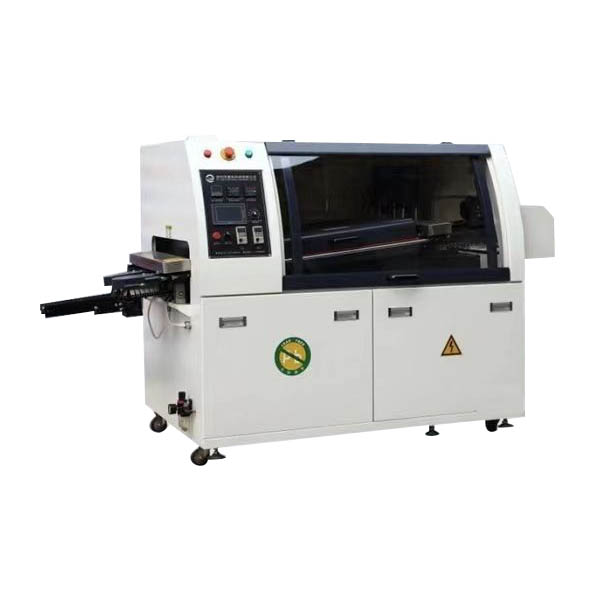What Makes Wave Soldering a Preferred Choice for Electronics Manufacturing?
2025-02-20
In the world of electronics manufacturing, reliability, precision, and speed are crucial. One of the key techniques used to achieve these factors is wave soldering. But what exactly makes wave soldering such a preferred method in the assembly of electronic components, and why do manufacturers continue to rely on it for mass production?
What is Wave Soldering?
Wave soldering is a popular method used in electronics assembly to solder components to printed circuit boards (PCBs). This process involves passing a PCB over a wave of molten solder, which bonds the component leads to the PCB pads. The method is widely used in the production of through-hole components in electronic devices, such as connectors, resistors, and capacitors.
How Does Wave Soldering Work?
The wave soldering process is both precise and efficient. It involves several steps, including:
1. Preparation: The PCB is first cleaned and prepared. The components are positioned on the board, and a flux is applied to the areas where the solder will be applied. Flux helps remove oxides from the metal surfaces and improves the flow of the solder.
2. Soldering: The board is passed over a molten solder bath, which is pumped in a wave-like motion. This molten solder is maintained at a specific temperature to ensure proper bonding. The PCB passes over the wave, and the solder flows up through the holes of the PCB, forming solid connections between the component leads and the pads.
3. Cooling: After the soldering wave, the PCB is cooled quickly in a cooling tunnel to solidify the solder joints and ensure their strength.
4. Inspection: The final step in the process is the inspection, where the board is visually checked or inspected with X-ray equipment to ensure that the solder joints are correctly formed and that there are no defects like cold joints or bridging.
Why Is Wave Soldering So Popular?
Wave soldering has earned its popularity in electronics manufacturing for several key reasons:
1. Efficiency and Speed
One of the biggest advantages of wave soldering is its ability to handle large volumes of PCBs in a short amount of time. Once set up, a wave soldering machine can continuously solder boards, making it an ideal choice for mass production. This efficiency allows manufacturers to meet high-demand production schedules and deliver products quickly.
2. Cost-Effectiveness
Wave soldering can be a more cost-effective option compared to other soldering methods, especially for large-scale production. The use of automated machinery reduces labor costs, and the ability to solder multiple components at once makes the process more economical in terms of both materials and time.
3. Consistency and Reliability
Wave soldering ensures uniform soldering across all connections, providing consistent and high-quality results. The process reduces the likelihood of human error, ensuring that each solder joint is formed to the correct standard. This consistency is essential for creating durable and reliable electronic devices that meet strict quality control standards.
4. Minimal Manual Intervention
Once set up, wave soldering requires little manual intervention, reducing the chances of errors that can occur with more hands-on processes. This also leads to less variability between different batches of products, ensuring a more reliable and standardized end product.
5. Handling Complex Designs
Wave soldering is capable of handling a wide range of board designs, including multi-layer PCBs and boards with complex component placements. The technology has evolved over time, allowing it to handle boards with varying component sizes and shapes without sacrificing quality.
6. Wide Compatibility
Wave soldering is compatible with a broad range of components, including through-hole components, which are still widely used in various electronic devices. Though surface-mount technology (SMT) is increasingly used, wave soldering remains relevant for products that require through-hole component assembly, offering manufacturers a versatile solution.
What Are the Limitations of Wave Soldering?
While wave soldering has many advantages, it’s important to consider its limitations, which may make it less ideal for certain applications:
1. Limited to Through-Hole Components: Wave soldering is primarily designed for through-hole components. As surface-mount technology (SMT) becomes more common, wave soldering’s relevance for SMT applications diminishes.
2. PCB Size Constraints: While wave soldering is highly efficient for standard PCB sizes, very large boards may not be as easily accommodated by traditional wave soldering machines. Larger boards may require modifications or different soldering techniques.
3. Requires Clean Boards: The boards need to be clean and free of contaminants before they enter the wave soldering process. Any residual dirt or grease can lead to poor solder joints, requiring additional cleaning steps before soldering.
4. Initial Setup Costs: The upfront cost of setting up a wave soldering system, including purchasing the necessary equipment and materials, can be significant, especially for smaller manufacturers or those transitioning from hand-soldering methods.
What Are the Alternatives to Wave Soldering?
While wave soldering is effective for many applications, there are alternative methods available, depending on the specific needs of the assembly process. Some alternatives include:
1. Hand Soldering: Manual soldering is often used for small production runs or for components that can’t be handled by wave soldering.
2. Reflow Soldering: For surface-mount technology (SMT) components, reflow soldering is more commonly used. It involves applying solder paste to the PCB and then heating the board to melt the paste and form solder joints.
3. Selective Soldering: Selective soldering is used for PCBs with both through-hole and surface-mount components. This method allows for targeted soldering of specific areas on a board, offering more precision than wave soldering for certain applications.
Conclusion
Wave soldering continues to be a critical technique in electronics manufacturing, particularly for high-volume production of PCBs with through-hole components. Its speed, cost-effectiveness, and ability to deliver consistent, high-quality results make it an attractive option for many manufacturers. However, as technology evolves and the demand for surface-mount components increases, manufacturers may need to consider alternatives or supplementary processes to complement wave soldering. By understanding the benefits and limitations of wave soldering, companies can make informed decisions about how best to incorporate this technique into their production lines for optimal results.



